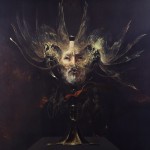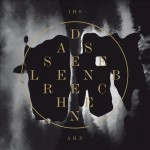
BY ALTUĞ KARAKURT (EE/III)
altug.karakurt@ug.bilkent.edu.tr
Black metal originated during the late 1980s. The first black metal bands actually belonged to other metal subgenres such as thrash metal or speed metal, but thanks to their experimental work and the extreme heaviness of their sound, they gave birth to what we now call black metal. These bands were the creators of this sound and the first wave of black metal. None of the first wave bands were making actual black metal as we know it today, but they were definitely experimenting with certain elements of it.
The genre’s breakthrough came with the formation of the Norwegian scene in the early 90s. Darkthrone, Immortal, Gorgoroth, Burzum, Satyricon, Emperor, Enslaved and Carpathian Forest are some of the best-known bands of this movement. These bands reforged the sounds they inherited from the first wave and crafted the raw, distorted, dark and heavy sound of current black metal. Unfortunately, at that time, these bands were so conservative about preserving the originality and characteristics of their sound that they named their style “True Norwegian Black Metal” and ignored any band apart from their own musical influences and community. However, things changed later.
A  s I have noted, the formation and development of black metal itself was very rapid, and so was its exhaustion. Due to the conservative attitude and strict rules of the Norwegian black metal scene, it burned out in a decade. During the late 90s, new black metal bands with different approaches started to form. They bent the genre and expanded their horizons by borrowing ideas from other genres, something the Norwegian community despised. Since then, I think, the early black metal era has been over. Current black metal bands rarely make only black metal; instead, they mostly experiment by mixing it with other styles and musical ideas. There are so many different approaches that it is not possible for me to cover them all here. So I have picked a few successful bands from different interpretations of black metal as examples and recommendations for those who are curious.
s I have noted, the formation and development of black metal itself was very rapid, and so was its exhaustion. Due to the conservative attitude and strict rules of the Norwegian black metal scene, it burned out in a decade. During the late 90s, new black metal bands with different approaches started to form. They bent the genre and expanded their horizons by borrowing ideas from other genres, something the Norwegian community despised. Since then, I think, the early black metal era has been over. Current black metal bands rarely make only black metal; instead, they mostly experiment by mixing it with other styles and musical ideas. There are so many different approaches that it is not possible for me to cover them all here. So I have picked a few successful bands from different interpretations of black metal as examples and recommendations for those who are curious.
Blackened death metal is one of the earliest cross-genres related to black metal. Since some of the early black metal bands converted from death metal, and there are various similarities between two genres, this is not surprising. My favorite band from this cross-genre is Behemoth. Their early releases can be categorized as ordinary black metal, but with their successive albums, they shifted further into the death metal zone and, in my opinion, found the perfect spot for their musical identity. Behemoth’s sound is very thick, hard-hitting and heavy, with an emphasis on good music production. The band blends their creative music with strong morbid imagery and profound lyrical content about individualism, ancient mythology and moral issues, together with quotations from ancient inscriptions, philosophers and alchemists. I highly recommend their latest two releases, “Evangelion” and “The Satanist.”
 Blackened doom metal combines the black metal mentality with a slower tempo, lower-toned instruments and more emphasis on spiritual themes like occultism, death and mysticism. In my opinion, Woods of Ypres is the best performer in this style. Their sound is much closer to black metal, but thanks to the pinch of doom metal they add to the recipe, the monotony of black metal is broken up and a much more interesting and dynamic style is formed. The dark, natural and all-encompassing atmosphere of their last album in particular, “Woods V: Under Grey Skies and Electric Light,” makes it one of a kind.
Blackened doom metal combines the black metal mentality with a slower tempo, lower-toned instruments and more emphasis on spiritual themes like occultism, death and mysticism. In my opinion, Woods of Ypres is the best performer in this style. Their sound is much closer to black metal, but thanks to the pinch of doom metal they add to the recipe, the monotony of black metal is broken up and a much more interesting and dynamic style is formed. The dark, natural and all-encompassing atmosphere of their last album in particular, “Woods V: Under Grey Skies and Electric Light,” makes it one of a kind.
Dark ambient is an avant-garde musical genre that focuses on the atmosphere sounds create and their emotional impact on the listener, rather than the content itself. It is strongly experimental, makes extensive use of electronic samples and sound effects and doesn’t really have a standard musical formula. Ihsahn, the front man of Emperor, has been releasing solo albums for quite some time. He likes to experiment with his black metal-rooted progressive sound, and with his impressive latest release, “Das Seelenbrechen,” he has added dark ambient music to his influences as well. This album builds on his familiar style with a greater emphasis on atmosphere and experimentation. In 2013, another leading figure in the early Norwegian black metal scene, Burzum, released a pure dark ambient album called “Sol Austan Mani Vestan.” This album provides the dark and depressing atmosphere of black metal through dark ambient music, and for Burzum, it is an amazing first effort in this style. The hour-long album has strong cohesion and harmony among its songs; it feels like each song evolves from the previous one. If you are interested in atmospheric, dark and experimental music, this album is a must-listen.
 Deafheaven is a band that combines post-rock, black metal and shoegaze. Their latest release, “Sunbather,” was a breakthrough for the American metal scene and gained them mainstream recognition. Deafheaven uses excessive reverb, highly distorted guitars and dark shrieking vocals to build their shoegazy, black metal sound. This sound feels very massive, with dark, repetitive tunes layered on top of each other. Their musical recipe is very unique now, but due to the positive reception and strong influence of “Sunbather,” I think similar bands will be formed soon.
Deafheaven is a band that combines post-rock, black metal and shoegaze. Their latest release, “Sunbather,” was a breakthrough for the American metal scene and gained them mainstream recognition. Deafheaven uses excessive reverb, highly distorted guitars and dark shrieking vocals to build their shoegazy, black metal sound. This sound feels very massive, with dark, repetitive tunes layered on top of each other. Their musical recipe is very unique now, but due to the positive reception and strong influence of “Sunbather,” I think similar bands will be formed soon.
Since I wrote about them before, I haven’t here mentioned Shining, the creators of blackjazz, and Alcest, who has a strong black metal background and makes exceptional dark shoegaze. Both are pioneers in their respective music scenes and definitely worth checking out.
I expect to witness many more creative efforts related to black metal in the near future. Many more cross-genres will appear and unique albums will be released. Although the 90s Norwegian scene was the golden age of the genre, I think we are currently witnessing the most creative and flourishing era in black metal’s history.
